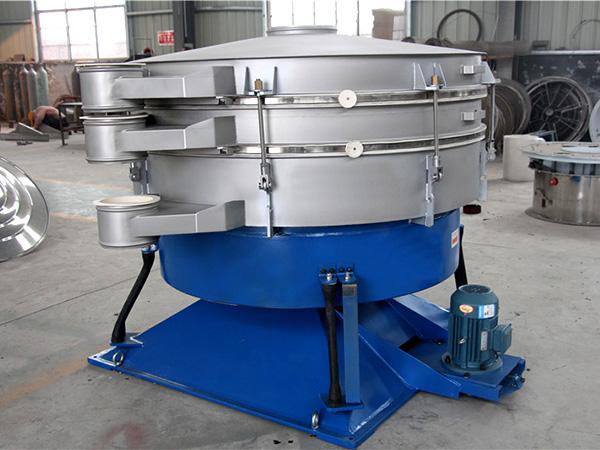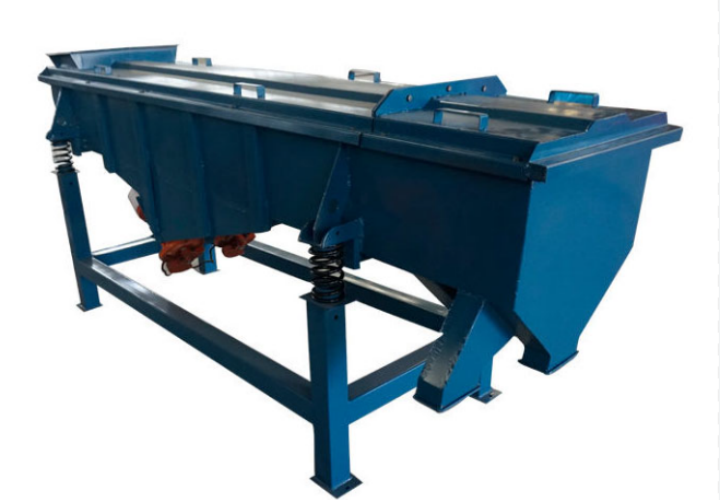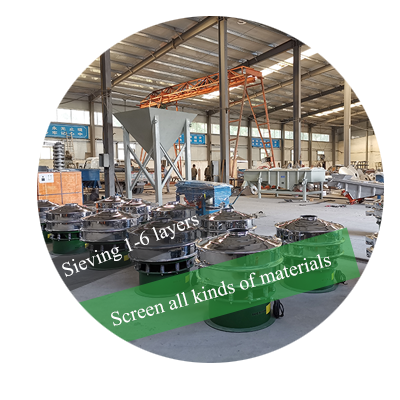Electric Automatic Sieve Shaker Vibrating Sieve Machine
What is an Electric Automatic Sieve Shaker Vibrating Sieve Machine?
Electric Automatic Sieve Shaker Vibrating Sieve Machine is a precision sieving device that uses an electric motor to drive an eccentric device to generate high-frequency vibration. It is used in laboratory testing and industrial production. Under the action of electric vibration, materials continuously tumble and bounce, passing sequentially through sieves of different mesh sizes to achieve classification of liquids, powders, or granules. The equipment can be configured with electric sieves ranging from 20 to 500 mesh, with the number of sieve layers flexibly selectable from 1 to 8 layers. Commonly used sieve diameters are 200mm, 300mm, and 400mm, meeting multi-stage sieving and various production capacity requirements.
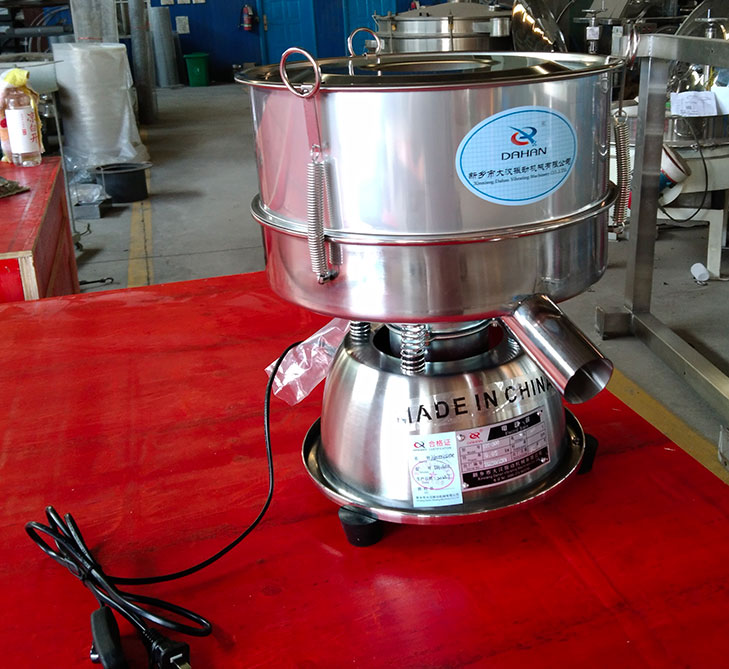
Depending on the characteristics of different materials, the Electric Automatic Sieve Shaker Vibrating Sieve Machine allows for flexible selection of matching amplitudes: a small amplitude of 0.5-1mm is suitable for light, dry powders such as starch; while a larger amplitude of 1.5-3mm is required for heavy, easily agglomerated materials such as metal powders to fully break down particles. The equipment is made of 304/316 stainless steel, which is corrosion-resistant, high-strength, and easy to clean. The model and parameters can be selected according to the different properties of the materials, and the processing capacity can be configured according to the needs of the laboratory or production line. Common processing capacities range from 50–200 kg/h for small machines to 2–8 t/h for large production line equipment.
Electric Automatic Sieve Shaker Vibrating Sieve Machine screening different materials video display
What types of Electric Automatic Sieve Shaker Vibrating Sieve Machine are there?
Electric Automatic Sieve Shaker Vibrating Sieve Machines can be divided into trolley type and stainless steel type according to the needs of the usage scenario and the choice of materials. The trolley type can be selected when it needs to be moved at any time, and the stainless steel type can be selected when there are hygiene requirements for the screened materials.
The trolley-type model is characterized by its sturdy casters, allowing for flexible movement and easy positioning. It is ideal for scenarios requiring frequent changes between different work points, significantly improving equipment mobility and space utilization. It is used for grading dry powders and granular materials, such as flour, grains, metal powders, and ceramic raw materials, and is suitable for applications requiring flexible deployment and medium screening accuracy.
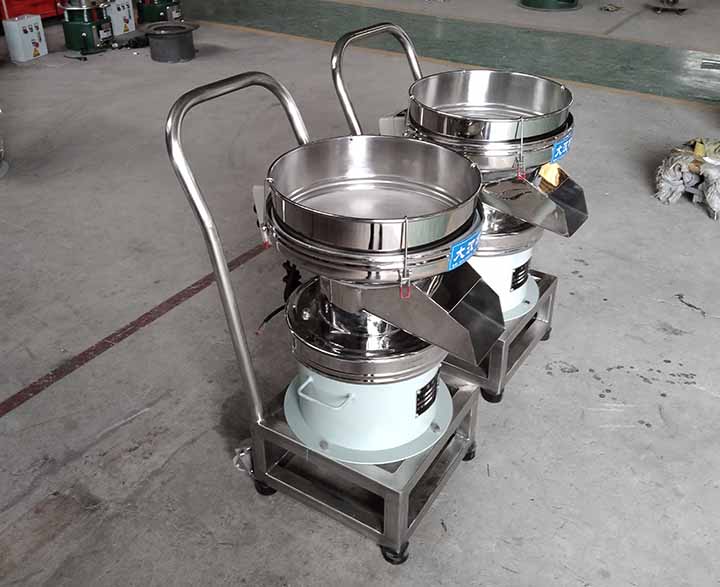
The stainless steel type is constructed entirely of stainless steel, offering extremely high corrosion resistance and hygiene standards. This type of machine effectively prevents material contamination, supports both wet and dry screening operations, provides high screening accuracy, and is easy to clean and maintain. Stainless steel screening machines are particularly suitable for screening and filtering powders, liquid slurries, and chemical solutions, ensuring a hygienic, safe, and GMP-compliant screening process.
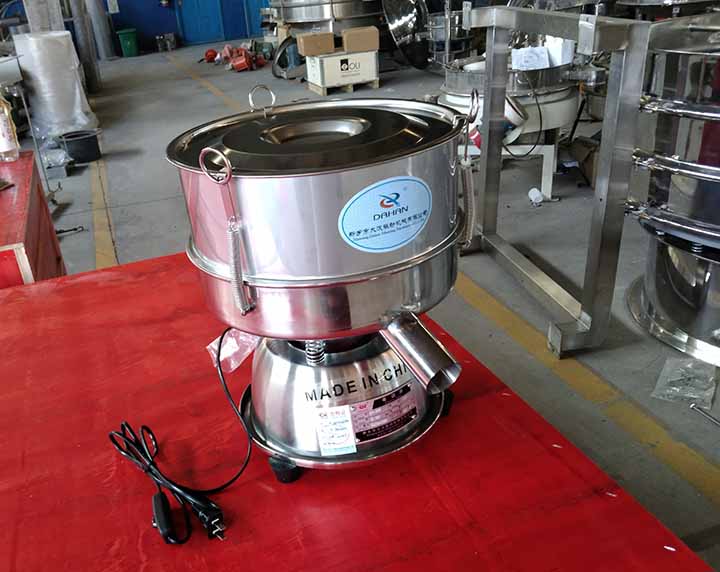
Electric Automatic Sieve Shaker Vibrating Sieve Machine parameters
| Model |
Power (kW) |
Screening Diameter (mm) |
Feeding Size (mm) |
Voltage (V) |
Speed (r/min) |
Capacity (kg/h) |
| DH-400 | 0.18 | 350 | <10 | 380 | 1440 | 100 |
What are the material properties of the Electric Automatic Sieve Shaker Vibrating Sieve Machine?
The choice of an Electric Automatic Sieve Shaker Vibrating Sieve Machine depends on the characteristics of the material. For food, pharmaceutical, or chemical powders, 304 or 316L stainless steel is typically used to prevent rust and contamination. For common building materials or plastic granules, carbon steel is sufficient. When handling fragile materials, an adjustable amplitude, gentle vibration mode should be selected to prevent breakage. For high-viscosity materials, greater vibration force or an impact-type ball ring design is required to overcome adhesion. Powders prone to static electricity can be equipped with an anti-static mesh or directly use an ultrasonic vibrating screen to break down cohesion. When screening high-density, heavy materials, a high-power vibrator is necessary to provide sufficient excitation force to ensure smooth material passage through the screen.
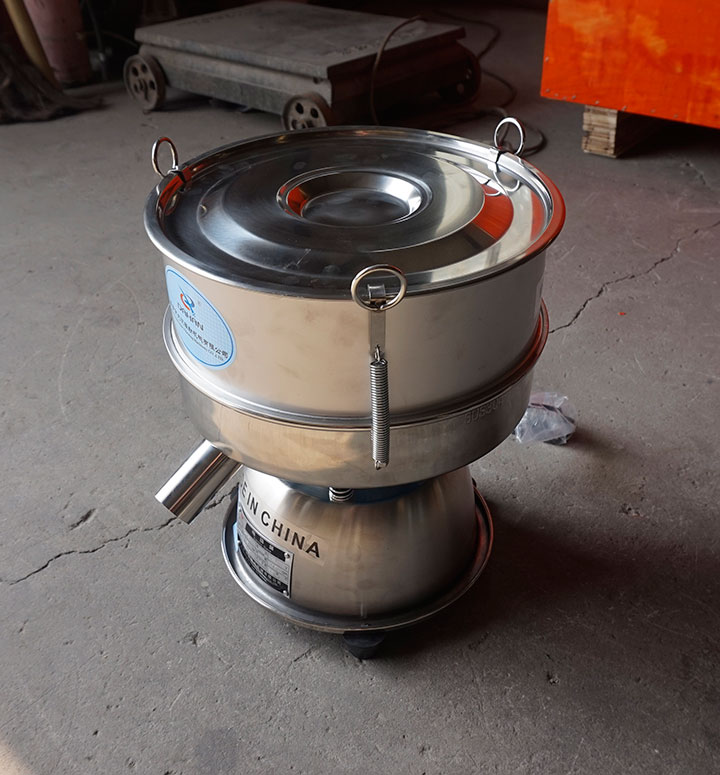
What is the sieving principle of the Electric Automatic Sieve Shaker Vibrating Sieve Machine?
The core principle of the Electric Automatic Sieve Shaker Vibrating Sieve Machine lies in its vibration method; different mechanisms are suitable for different materials. Electromagnetic or ultrasonic vibration is transmitted to the sieve surface through high frequency and low amplitude, preventing fine powders such as flour, graphite, and pharmaceutical powder from clogging the holes, achieving high-precision sieving, and is suitable for laboratory analysis. Mechanical vibration is generated by a motor-driven eccentric block to produce three-dimensional vibration, causing the material to move in a spiral horizontal motion and a vertical bouncing mixed mode on the sieve surface, sieving granular materials such as sand, grains, and plastic granules. Rotary vibrating sieves combine rotation and impact to simulate manual sieving, suitable for difficult-to-sieve materials such as molding sand and cement, conforming to standards such as ASTM, and achieving accurate and comparable data.
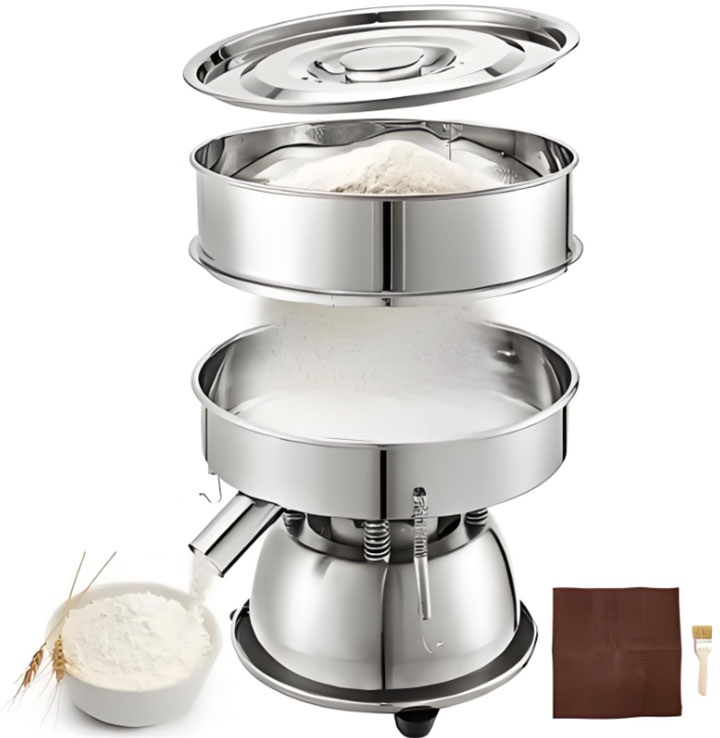
What is the screening accuracy of the Electric Automatic Sieve Shaker Vibrating Sieve Machine?
The Electric Automatic Sieve Shaker Vibrating Sieve Machine offers high sieving accuracy, with a wide range of screen diameters, layers, and mesh sizes, allowing you to choose according to your production needs.
Sieve Diameters: Common sizes include 75mm, 100mm, 200mm, 300mm, and 400mm. Laboratories often use 200mm or 300mm, while small-batch production or industrial-scale screening can use 400mm or larger.
Number of Screen Layers: The machine can simultaneously stack multiple screen layers, such as 3, 5, or 8. More layers allows for simultaneous analysis of a wider range of particle size distributions, significantly improving testing efficiency.
Sieve Mesh Range: Typically, mesh sizes range from a few to thousands (e.g., 20μm to 20mm). Users should select a size based on their target particle size range to ensure coverage of their analysis needs.
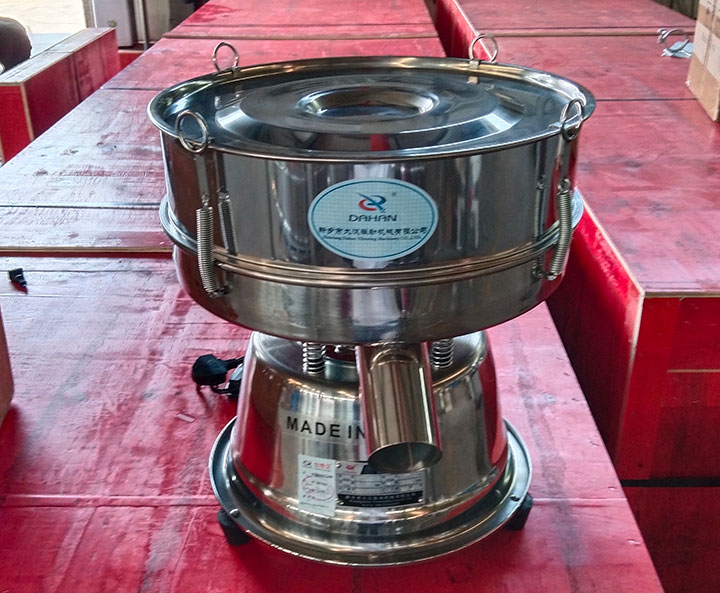
Electric Automatic Sieve Shaker Vibrating Sieve Machine Industry Applications
Electric automatic sieve shakers and vibrating sieve machines are widely used in laboratories, small-batch production, and in areas requiring quality control of materials. Small-volume samples demand high precision and good repeatability. In materials science, drug development, and nanoparticle research, benchtop, adjustable-vibration precision instruments with a moderate number of worktables are typically chosen. In industries such as building materials, food, and pharmaceuticals, test results must comply with international standards such as ASTM and ISO. Ro-Tap vibrating sieves are widely used in these fields due to their reliable and traceable test results. They are also suitable for small businesses requiring a certain processing capacity. The equipment needs to be robust and durable, capable of continuous operation for extended periods. Larger diameter sieves (e.g., 300 mm or 400 mm) are typically used to increase single-pass processing capacity.
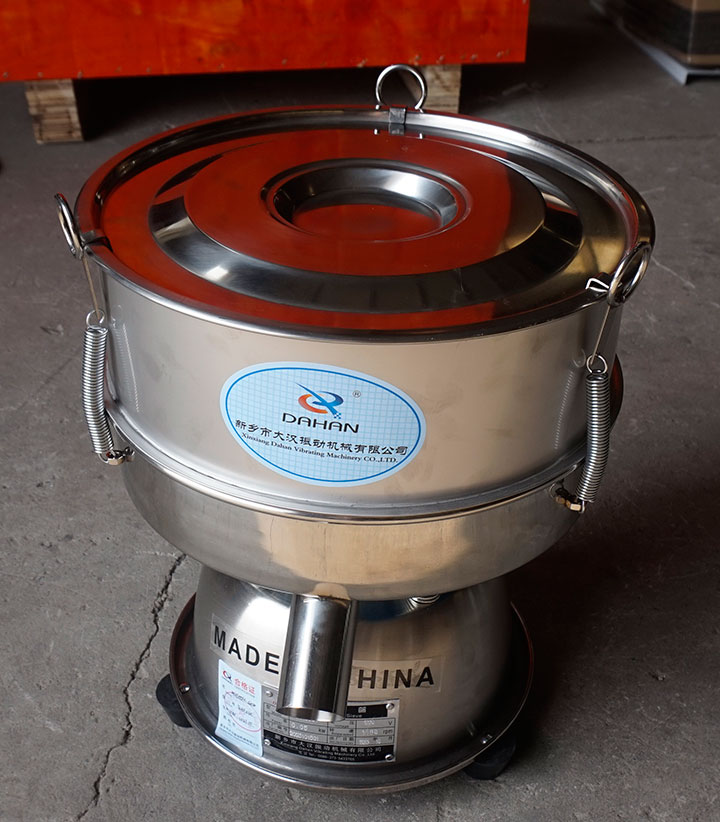
Electric Automatic Sieve Shaker Vibrating Sieve Machine Manufacturer
Our factory manufactures Electric Automatic Sieve Shaker Vibrating Sieve Machines. We can customize them to suit liquid, powder, and other material forms, as well as mesh size and production capacity. We offer 40-mesh, 60-mesh, and 200-mesh screens, allowing you to precisely select the appropriate screen based on the particle size of your material. If necessary, please contact our staff in advance to conduct a test run at our factory before finalizing your equipment.
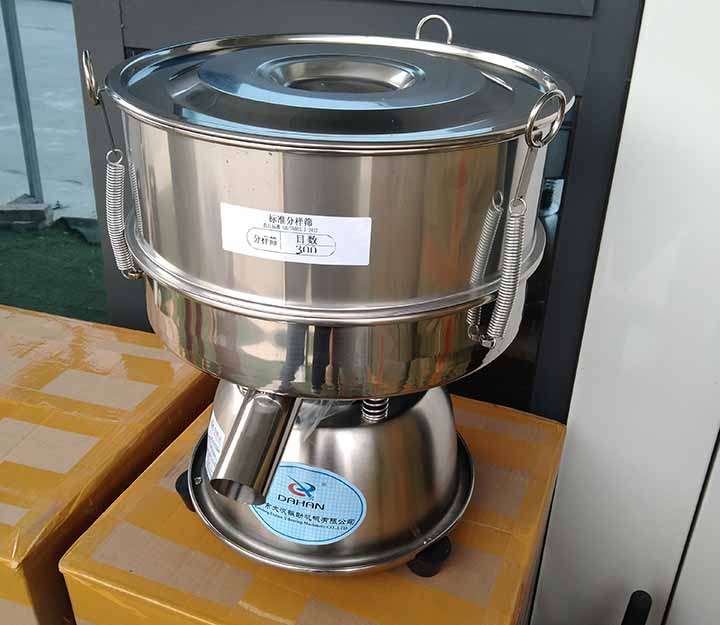
The Electric Automatic Sieve Shaker Vibrating Sieve Machine is a core device for modern sieving and particle analysis. Its sieving principle, vibration method, sieve configuration, vibration intensity adjustment capability, and material selection determine its applicability and screening accuracy. Whether in precision analysis in scientific research laboratories or in quality control and small-batch processing in industrial production, this type of equipment plays an irreplaceable role. A correct understanding of material characteristics and screening requirements, coupled with the appropriate machine model and parameters, can maximize performance and ensure the accuracy and stability of screening results.
-
Swing Vibrating Screen is a high-precision fine-particle screening equipment, also known as a reciprocating vibrating screen.
-
Carbon steel vibrating screen is a device that uses the principle of vibration to screen granular or powdered materials.
-
Grading vibrating sieve is a mechanical device that uses the principle of vibration to screen and grade materials of different particle sizes.
-
Double deck vibrating screen has two layers of screens installed inside.
-
Tumbler Screening Machines
Tumbler Screening Machines are available in carbon steel, stainless steel, and special steel to meet...
-
High -frequency vibration sieve for latex paint filter
High -frequency vibration sieve for latex paint filter is a filtration device designed for high-viscosity liquid systems such as water-based paints ...
-
Linear Vibrating Screen For Plastic Particles
Linear Vibrating Screen For Plastic Particles is used for screening and grading plastic particles...
-
Fine iron powder Sieving Machine
Fine iron powder Sieving Machine can process fine iron of varying mesh sizes. Four common types of equipment are used depending on...

Email:
sale@xxdahan.com
WhatsApp:
+86 15236742901
Add:
1000m West of Forest Park,Yanjin County,Xinxiang City,Henan Procince,China.

